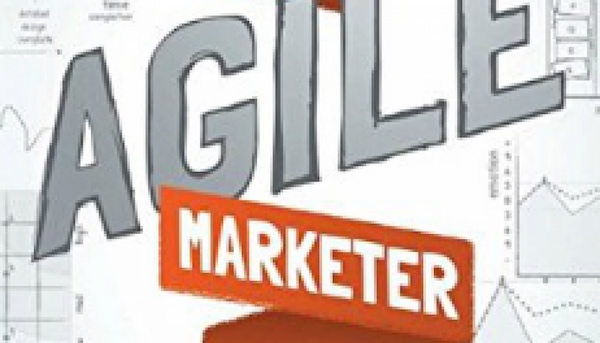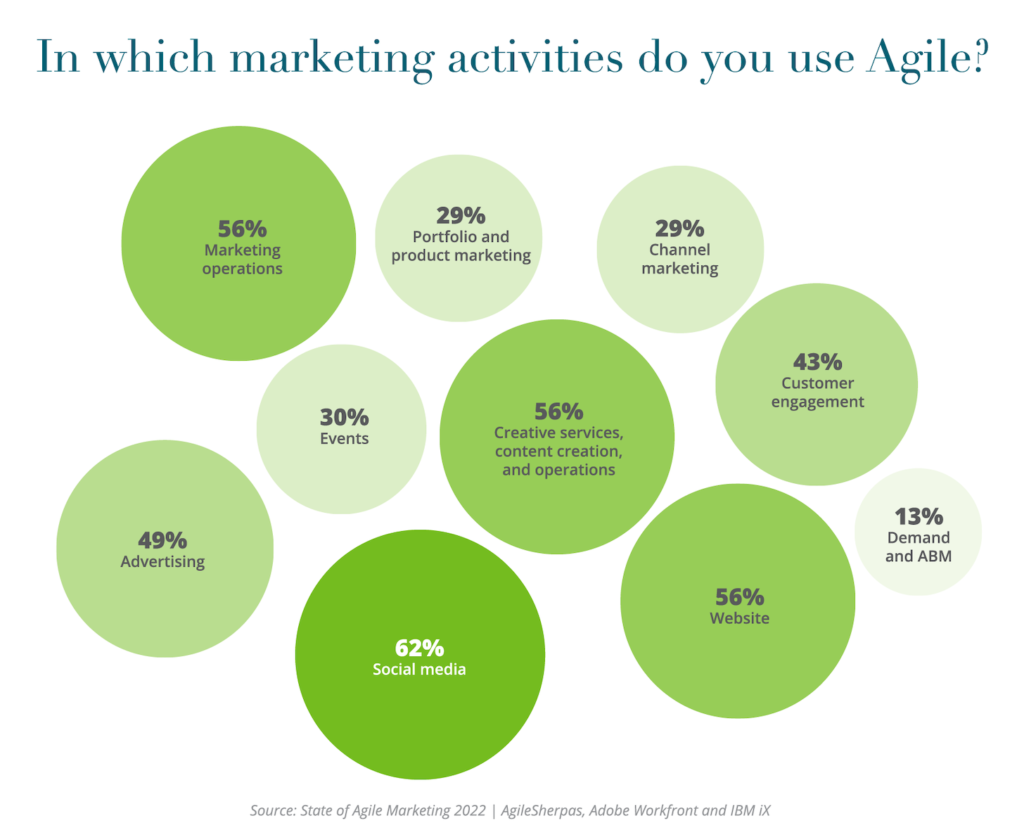Last month, I was delighted to have Roland Smart, VP of Social & Community Marketing at Oracle, author of the terrific book The Agile Marketer, and co-host of the Marketing Agility Podcast, join me on chiefmartecTV for our episode on the myths & monsters of agile marketing.
As a follow up, here’s a Q&A that I had with Roland that boils down some of the most important takeaways on agile marketing from our discussion on the show.
1. Tell us a bit about your background. What was your path to joining Oracle?
I learned my trade by “doing” and in the context of the apprenticeship model. I got my start working at startups where I was exposed to nearly every aspect of marketing and where my balanced interests with creative work (design) and business (entrepreneurialism) turned out to be an advantage.
Early on I worked as a marketing consultant, which exposed me to a broad range of businesses and marketing challenges. From there, I joined a CPG company that I’d been consulting for — they brought me out to San Francisco.
As I immersed myself in the Bay Area marketing community I started using social technology to support the launch of new beverage brands. I also discovered a passion for marketing technology, which ultimately lead to senior marketing roles with some marketing technology firms. One of those, Involver, was acquired by Oracle, where I continue to focus on community and social marketing initiatives.
2. What does your role as VP of Social & Community Marketing at Oracle entail?
My primary focus is looking after The Oracle Technology Network, which is our global peer-to-peer community that supports every line of business, including our partner network, support organization, user group community, and others.
More generally, I am part of a cohort of marketers that have come into Oracle via acquisitions who are focused on the modernization of our marketing platforms and practices. As such, I’m leading the internal roll-out of some of the marketing technologies that Oracle has acquired in the last few years.
3. You’re also the author of the terrific book The Agile Marketer and one of the leading advocates of agile marketing. How did you get started with agile?
Like many marketers, I started using agile practices before I knew what agile was. In some cases, my peers introduced me to these practices and in others I stumbled upon them myself.
At Involver, my former colleague Jascha Kaykas-Wolff introduced me to a network of marketers who were thinking about how to interpret the Agile Manifesto in the marketing context. At Involver, we also engaged with a consulting company to train our product management and marketing teams to adopt agile practices.
Those experiences started my own journey with agile. Today, I see broader awareness and adoption of agile practices but it’s still early days. My work with Frank Days on the Marketing Agility Podcast is in the service of driving more awareness and sharing of best practices.
4. What are the differences that you see between agile marketing and agile software development?
At a foundational level, I don’t see that much difference when it comes to the core values and principles. However, when it comes to implementation, there are key differences.
As marketers we must interpret agile, and create new methods, to address a range of initiatives that go well beyond software. In general, my research indicates that marketers are most successful when they start with less prescriptive methods.
Marketers set themselves up for success when they integrate their agile practices with more traditional research, planning, and strategy practices.
In addition, they set themselves up for success when they integrate their agile practices with more traditional research, planning, and strategy practices — for example, with the use frameworks like Objectives & Key Results (OKR) that keep agile implementation teams in alignment with strategic direction.
5. What’s the single biggest challenge you see companies wrestling with in adopting agile marketing, and how do you advise them to tackle it?
Frank Days and I recently presented to the SF Agile Marketing Meetup on the top 6 challenges that we hear from marketers. The one that rises to the top is about garnering executive buy-in to the approach.
Agile has broad implications for the way that we work and behave, how we structure our teams, how we develop and implement our strategies.
This makes sense, because agile has broad implications for the way that we work and behave, how we structure our teams, how we develop and implement our strategies, and how we engage with our community of customers. It’s a mind-set shift, and one that requires a commitment to building a different kind of culture.
6. Some people believe that agile is great for small companies, but they struggle to see how it can work in a larger marketing organization with hundreds of employees. Can agile marketing scale? How?
Agile has certainly gotten more traction at small companies to date, but I believe that it can scale to enterprises and will lead to similar benefits. Scaling agile is not fundamentally harder than scaling “waterfall” style management. The primary challenge when scaling such approaches is people.
Keeping people aligned and in sync is hard. We can use technology, such as agile tools and platforms, to support scale.
Keeping people aligned and in sync is hard — a fact that Dunbar’s number speaks to. We can use technology, such as agile tools and platforms, to support scale and to extend our ability to maintain alignment between a large number of people and teams. That said, I do not currently see a dominant design emerging when it comes to scaling agile into an enterprise.
7. How can companies connect the fast-moving, iterative and experimental energy of agile marketing to higher-level strategy and an enterprise-wide coordinated attack on a market?
This goes back to my earlier comment about integrating agile with more traditional research, planning, and strategy practices. Frameworks like the Objectives & Key Results (OKR). I think this is where marketers are really pushing the boundaries today — incidentally, it’s also a surface where executive buy-in is of critical importance.
Thank you, Roland — and thanks again for the great agile marketing discussion on chiefmartecTV last month!





Thanks for the recommendation for the book The Agile Marketer.